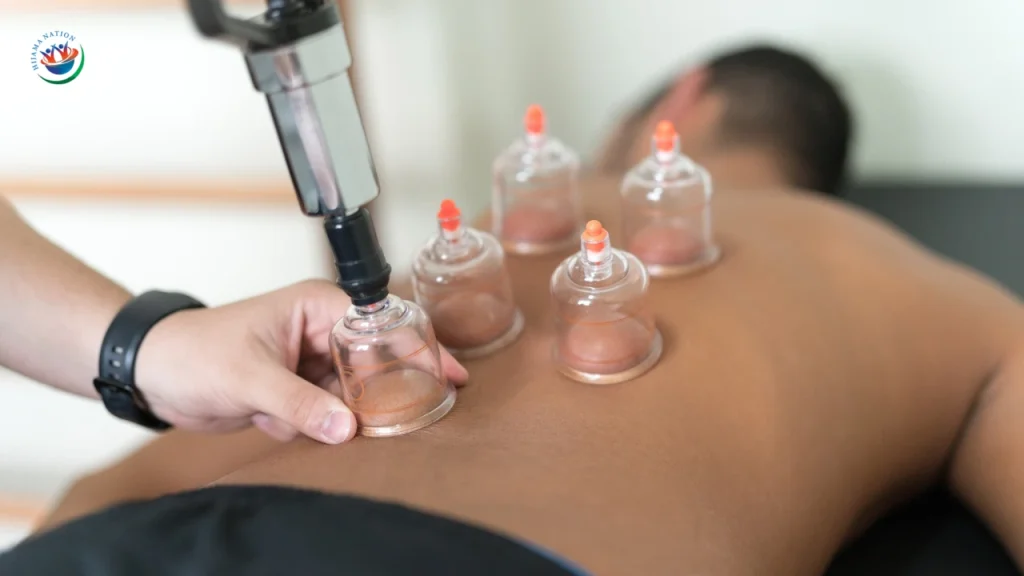Asthma is a chronic respiratory condition. It causes breathing difficulties due to airway inflammation, muscle constriction, and mucus buildup. Symptoms include shortness of breath, wheezing, coughing, and chest tightness. Common triggers include allergens, pollution, cold air, respiratory infections, and stress. Managing asthma requires medication, lifestyle changes, and supportive therapies.
Hijama cupping therapy for Asthma is an alternative treatment that involves creating suction on the skin using cups. Wet cupping, in particular, includes small incisions on the skin to draw out toxins and improve blood circulation. This method may help reduce inflammation, clear mucus, and strengthen the immune system. Many people with asthma report improved breathing and fewer symptoms after regular Hijama sessions.
Understanding Asthma and Its Challenges
Asthma is a long-term condition that affects millions worldwide. While some cases are mild, severe asthma can interfere with daily activities and even become life-threatening. The main challenges include:
- Frequent breathing difficulties and reduced lung function.
- Dependency on inhalers and medications.
- Increased risk of respiratory infections.
- Impact on sleep, physical activity, and overall quality of life.
Managing asthma effectively requires a combination of medical treatments, lifestyle adjustments, and holistic approaches like Hijama.
How Hijama Cupping Helps with Asthma

- Reduces Airway Inflammation – Wet cupping draws out excess blood and inflammatory byproducts. This process helps lower inflammation in the lungs, making breathing easier.
- Enhances Oxygen Supply – Removing stagnant blood improves circulation, allowing oxygen-rich blood to reach the lungs efficiently.
- Expels Mucus and Toxins – Wet cupping removes toxins from the body, which may help clear excessive mucus buildup in the respiratory tract.
- Boosts Immune System – A strong immune system can prevent respiratory infections, which often worsen asthma symptoms. Wet cupping promotes immune function by stimulating blood flow.
- Relieves Stress and Anxiety – Stress can trigger asthma attacks. Wet cupping promotes relaxation, reduces tension, and enhances overall well-being.
Best Practices for Wet Cupping Therapy in Asthma Patients
- Consult a qualified Hijama practitioner to ensure safe and effective treatment.
- Schedule sessions when asthma is stable to prevent complications.
- Avoid cupping during an active asthma attack to prevent breathing difficulties.
- Focus on specific Hijama points that support lung function and immunity.
- Stay hydrated before and after sessions to aid in detoxification.
- Continue prescribed asthma medications as advised by a healthcare professional.
Recommended Wet Cupping Points for Asthma Relief
- BL13 (Lung Shu) – Supports lung health and respiratory function.
- ST36 (Zusanli) – Enhances immunity and energy levels.
- GV14 (Dazhui) – Helps clear respiratory congestion and regulate body temperature.
- CV17 (Shanzhong) – Aids in deep breathing, reducing tightness in the chest.
- BL23 (Kidney Shu) – Strengthens kidney function, which supports lung vitality.
- BL20 (Spleen Shu) – Improves digestion, which can indirectly benefit lung function by reducing phlegm production.
Scientific Perspective
Research suggests that wet cupping may help manage inflammatory conditions. While studies on asthma and Hijama are limited, some reports indicate that cupping therapy can reduce inflammation, improve circulation, and enhance overall respiratory health.
However, we have noticed a major improvement as our students have clinics around the world and they have told us that hijama cupping therapy helps their clients to relieve chest pain and asthma symptoms.
Additional Lifestyle Tips for Asthma Management
To enhance the effectiveness of Hijama and manage asthma more effectively, consider the following lifestyle adjustments:
- Maintain a Clean Environment – Reduce exposure to dust, pollen, pet dander, and other allergens.
- Follow a Healthy Diet – Include anti-inflammatory foods such as ginger, turmeric, and omega-3 fatty acids.
- Practice Breathing Exercises – Techniques like diaphragmatic breathing can strengthen the lungs.
- Stay Physically Active – Regular low-impact exercises, such as walking or swimming, can improve lung capacity.
- Manage Stress Levels – Meditation, yoga, and relaxation techniques help prevent stress-induced asthma attacks.
Conclusion
Wet cupping therapy may provide relief for asthma patients by reducing airway inflammation, clearing mucus, and boosting immunity. It is not a replacement for medical treatment but can serve as a complementary therapy. Always consult a trained Hijama practitioner and follow medical guidance for optimal asthma management.
